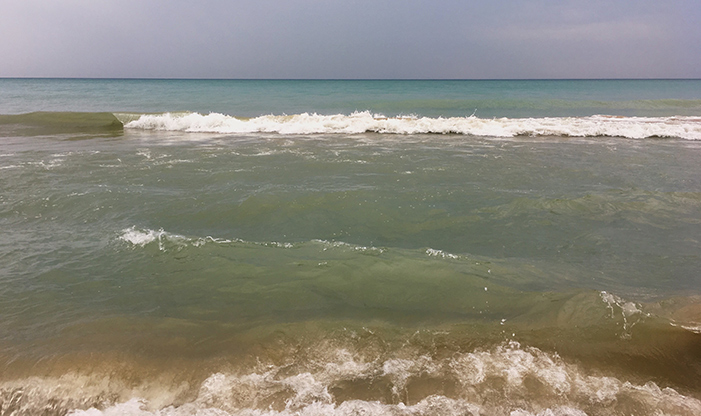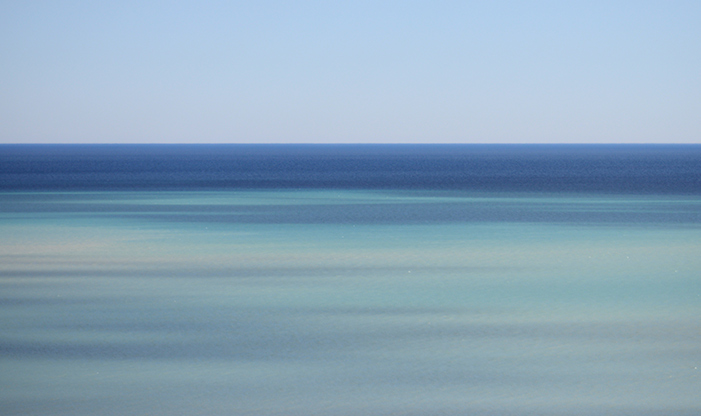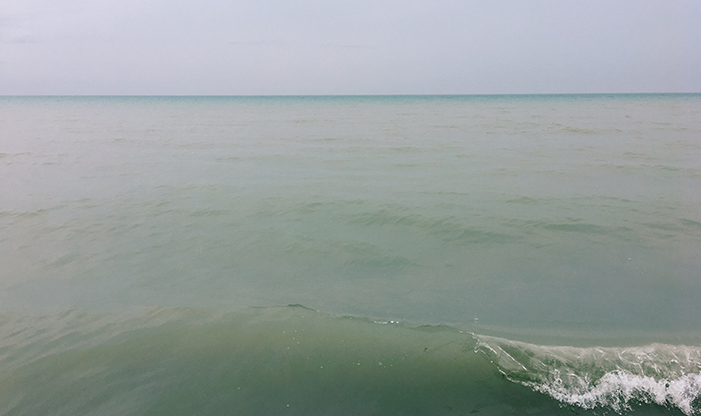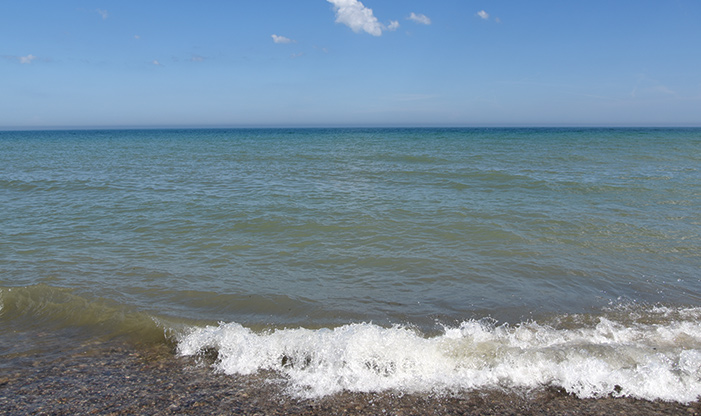Lake Michigan is a slightly different color almost every time you look at it. Seeing the lake in a variety of shades of blue, green, silver, or other unusual colors is a treat for the eyes. It also reflects complex scientific principles at work. Overall, Lake Michigan’s coloration is caused by a combination of factors. This includes the behavior of light in relation to water depth, refraction, reflection, and suspended particles in the water. It can also be a sign of water quality. Water is colorless. It can appear to be different shades of blue, or a slightly different color altogether for a number of reasons. When water is the blue color we associate with a lake, it is most often the reflection of the sky.
The Behavior of Light

Light from the sun hits the water at different angles at different times. It can be refracted, which refers to a change in the light’s direction when it passes from air to water or vice-versa, and reflected, which is like a mirror image. When it hits the water at an angle that deviates from a line going straight up from the surface, it will reflect more. Hitting it at a smaller angle from this line, it will reflect less.
Electromagnetic radiation exists as a spectrum of waves mostly beyond human visual perception. When they are in a frequency of 380 to 740 nanometers, or billionths of a meter, they are visible. Blue light is a shorter wavelength, about 450 nanometers, whereas red light is longer, around 700 nanometers.
Light and the Lake’s Color

When the lake is shallow, light scatters and reflects shorter wavelengths of light, causing a lighter blue color to appear. The blue color is a product of blue light being bounced around by the physical structure of water and the color of the sky. Light that hits the surface of the lake from straight above penetrates more deeply, reflecting less. When the lake is deep, and the angle of incoming light is smaller, Lake Michigan’s color appears deep blue. This is because the light travels down with little obstructions and dissipates far below the surface. The light then appears darker in the visible spectrum.
Blue is Not Always Better

It gets more complicated when there are suspended solids in the water. The solids reflect light, making the color of the lake seem greenish or murky. Lake Michigan looks bluer than it did in the past. Clearer, bluer water is a sign that something is removing phytoplankton, which includes a form of green algae. Green algae is what had previously made the water greener and murkier, and responsibility for this bluer water goes to Zebra and Quagga mussels.
Phytoplankton is a basic building block of the food chain, and it is a food source for many aquatic animals. It feeds many small fish in Lake Michigan. Populations of small fish have collapsed because of the loss of phytoplankton from the invasive mussels, and that has affected the larger fish that depend on the smaller fish for food.
Lake color can be a complex issue, with changes in hue and brightness. We are lucky to have the wonderful Lake Michigan here in Milwaukee.


